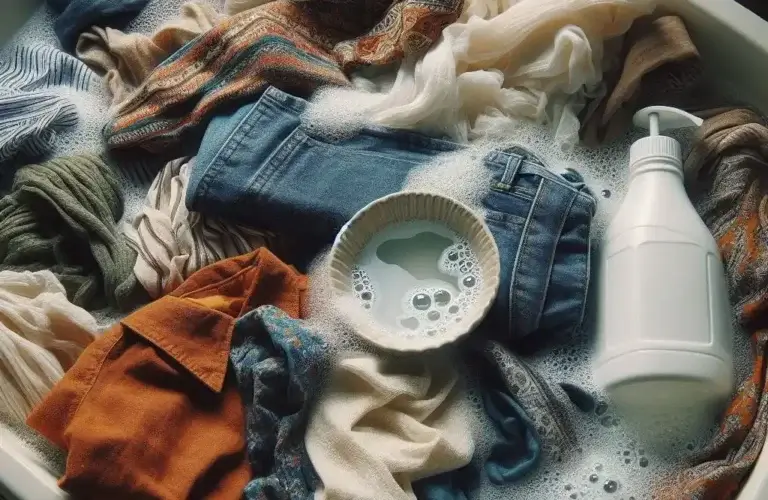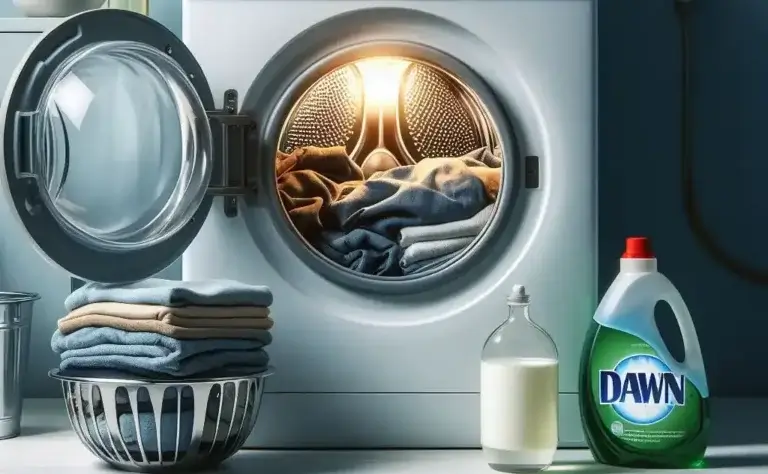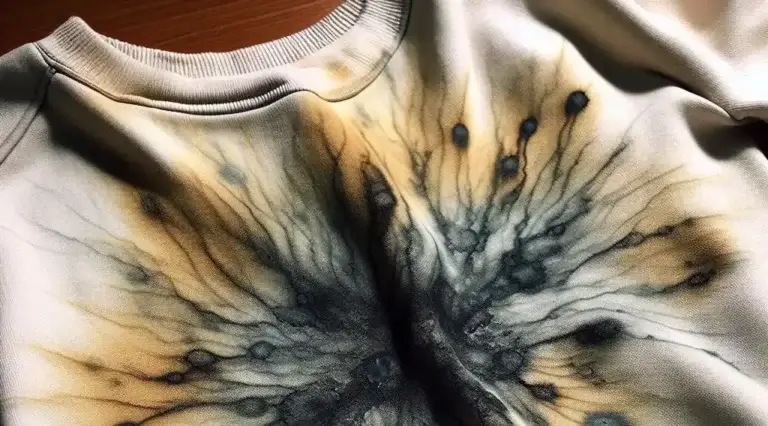Can I Wash Eyeglass Cleaning Cloth? Eyeglass Cloth Cleaning Guide
Do you wear glasses or contact lenses? If so, you know how annoying smudges and dirt on your lenses can be. A quality eyeglass cleaning cloth is essential for keeping your eyewear crystal clear. But what do you do when the cloth itself gets dirty? Can you wash an eyeglass cleaning cloth?
I’ll cover everything you need to know in this complete guide to cleaning eyeglass cloths and microfiber cleaning cloths. You’ll learn:
- The best way to wash eyeglasses cleaning cloths
- How to avoid damaging delicate microfiber material
- Tips for keeping lenses streak-free and smudge-free
- When it’s time to replace your trusty eyeglass cloth
- Answers to frequently asked questions about washing eyeglass clothes
If blurry, smeary glasses are driving you crazy, this guide is for you. Read on to refresh that eyeglass cloth and restore perfect vision!
Table of Contents
Why Clean Eyeglass Cloths Get Dirty
Your eyeglass cleaning cloth picks up:
- Oils and dirt from your fingers
- Dust, pollen, and particles in the air
- Skin cells and facial oils from contact with your skin
- Makeup, lotion, hair products, and other residues
Over time, these contaminants build up in the tiny microfiber gaps that give the cloth its cleaning power. As the cloth gets dirtier, it becomes:
- Less effective at cleaning lenses properly
- More likely to leave behind smudges, streaks, and smears
A dirty eyeglass cleaning cloth can even scratch your delicate lenses by grinding particles against the surface.
To keep your glasses and contacts spotless, it’s important to wash buildup from the cloth regularly.
Can You Machine Wash Eyeglass Cloths?
Eyeglass cleaning cloths are generally made from microfiber – a finely woven blend of polyester and polyamide (nylon).
Microfiber cloths are valued for:
- Their durability
- Soft, lint-free texture
- Ability to clean glass without chemicals or liquids
- Power to lift oil, grease, dirt, and grime from surfaces
However, vigorous washing can damage the delicate gaps and loops in microfiber material. Over time, rough treatment makes the fibers less effective at cleaning.
To maximize the lifespan of your eyeglass cleaning cloth, it’s best to wash it by hand.
Follow these steps to hand wash an eyeglass cleaning cloth:
- Fill a sink, bucket, or bowl with cool, clean water
- Add a few drops of mild, bleach-free dish soap
- Gently swish the cloth around to dissolve dirt and oils
- Drain the soapy water and refill with cool clean water
- Rinse until all soap residue is removed
- Gently squeeze excess moisture from the cloth
- Lay flat or hang to air-dry
Avoid wringing, twisting, scrubbing, or bunching the cloth when washing. Be extremely gentle to protect the microfiber gaps.
You can wash most microfiber eyeglass cloths this way without causing damage. However, always check the care tag for specific washing instructions.
Can I Wash Eyeglass Cleaning Cloth

We all know the frustration of smudged glasses. You reach for your trusty cleaning cloth, only to find it’s lost its magic touch. But before you toss it in the trash, consider this: with proper care, your eyeglass cleaning cloth can be revived and reused for many smudge-free sessions.
The Magic of Microfiber
Most eyeglass cleaning cloths are made of microfiber, a wonder fabric woven from incredibly thin fibers. These fibers create a unique texture that attracts and traps dust, dirt, and oils without scratching your lenses. But over time, these tiny traps become full, rendering the cloth ineffective.
Washing Wisdom: The Do’s
- Hand-washing is king: For gentle cleansing, fill a bowl with cool water and add a few drops of mild, fragrance-free dish soap. Swish the cloth around, then rinse thoroughly under cold running water. Squeeze out excess water and lay flat to air dry.
- Machine on delicate: If you’re short on time, toss your cloth in the washing machine with a gentle detergent, but skip the fabric softener (it can leave a residue on the fibers). Choose a cold water cycle and air dry afterwards.
- Shake it out regularly: Before each cleaning, give your cloth a good shake to dislodge any loose particles. This simple step can extend its cleaning power between washes.
Washing Woes: The Don’ts
- Hot water hazard: High temperatures can damage the delicate microfiber fibers. Stick to cool or cold water for both hand and machine washing.
- Harsh chemicals: Bleach, fabric softeners, and other harsh chemicals can break down the fibers and leave streaks on your lenses. Opt for gentle detergents specifically formulated for delicates.
- The dryer danger: The heat and tumbling action of a dryer can shrink your cloth and make it rough. Air drying is the safest and most effective way to maintain its cleaning power.
Bonus Tip: Replace your eyeglass cleaning cloth every few months, especially if you use it daily. A worn-out cloth can actually scratch your lenses, so don’t be afraid to give it a fresh start!
By following these simple do’s and don’ts, you can keep your eyeglass cleaning cloth in tip-top shape and enjoy crystal-clear vision for longer. Remember, a little TLC goes a long way in maintaining this essential eyewear accessory.
So, the answer to the question “Can I wash my eyeglasses cleaning cloth?” is a resounding yes! With proper care, you can keep your clothes working their magic and your glasses sparkling clean.
When Should You Wash Eyeglass Cloths?
How often you need to wash an eyeglass cleaning cloth depends on how heavily you use it. As a general guideline, wash microfiber eyeglass cloths:
- Every 1-2 weeks for heavy use
- Every 2-4 weeks for moderate use
- Once a month or longer for occasional use
It’s easy to tell when an eyeglass cloth needs refreshing. Signs it’s time to wash include:
- Visible dirt, smudges, makeup, or residues
- An unpleasant smell from dirt and oils
- Streaks or smudges are left on lenses, even after wiping
- Reduced effectiveness cleaning lenses
Don’t wait until the cloth is filthy. Wash regularly to prevent a buildup of grime that’s harder to remove.
Can You Put Eyeglass Cloths In The Dryer?
It’s best to air dry microfiber eyeglass cleaning cloths instead of putting them in the dryer. Heat from a dryer can damage the microfiber loops, shortening the usable lifespan.
To air dry an eyeglass cleaning cloth:
- Lay flat on a clean towel or drying rack
- Hang over a towel bar or drying rack
- Drape over a hanger
Avoid direct sunlight, which can fade colors. Make sure the cloth dries completely before using it again for best results.
How To Wash Eyeglass Cloths With Other Laundry
While hand washing is ideal, you can machine wash eyeglass cleaning cloths if needed. Take these precautions to protect the microfiber:
- Use a mesh laundry bag to prevent twisting, friction, and excess agitation
- Wash on the gentle or delicate cycle with cold water
- Skip the dryer – air dry the cloth instead
- Avoid fabric softener and dryer sheets which leave residues
Even with these safeguards, machine washing shortens the usable life of microfiber eyeglass cloths. Limit it to occasional gentle cycles if possible.
Signs You Need A New Eyeglass Cleaning Cloth
With proper care, a quality microfiber eyeglass cleaning cloth can last 6-12 months or longer. But they do wear out eventually.
Replace your eyeglass cloth if you notice:
- Permanent stains that don’t wash out
- Pilling or fraying threads
- Visible damage like thin spots or holes
- Poor cleaning ability even when freshly washed
Don’t wait until lenses get scratched from a threadbare cloth. Retire the old cloth and replace it at the first signs of wear.
Tips For Extending Eyeglass Cloth Lifespan

You can maximize the usable lifespan of microfiber eyeglass cleaning cloths with careful handling:
- Store in a clean, dry place – not your pocket!
- Avoid extreme heat like dryers or direct sun
- Wash regularly before heavy soil builds up
- Always wash by hand or delicate cycle
- Line dry instead of machine drying
- Don’t use bleach, which degrades microfiber
- Replace at the first sign of damage or wear
What About Lint-Free Eyeglass Cloths?
Some eyeglass cleaning cloths advertise themselves as “lint-free.” This refers to clothes made from extremely high-density microfiber or ultrasuede.
Lint-free eyeglass cloths are produced through a special process that maximizes the surface area. This creates millions more microfiber loops per square inch.
Benefits of lint-free eyeglass cleaning cloths include:
- Softer, smoother texture
- Total absence of lint, fuzz, or pilling
- Enhanced cleaning power from extra surface area
- Longer lifespan from the dense weave
Lint-free microfiber is safe to gently hand wash using the same method described earlier. Just take extra care not to damage the delicate high-density weave.
Can You Wash Non-Microfiber Eyeglass Cloths?
While microfiber reigns supreme for eyeglass cleaning, some traditional lens cloths are made from cotton, flannel, or other fabrics.
Always check material and care instructions before attempting to wash non-microfiber eyeglass cloths. Some guidelines:
Cotton – Machine wash warm, gentle cycle. Tumble dry low.
Flannel – Hand wash only with mild soap. Line dry.
Chamois leather – Hand wash only. Allow to air dry thoroughly.
Silicone – Rinse under water. Air dry. Avoid heat.
No matter what the fabric, handle eyeglass cleaning cloths gently to prevent pilling and snags which could scratch lenses.
Frequently Asked Questions
Still, have questions about washing eyeglass cleaning cloths? Here are answers to some common queries.
Should you wash eyeglass-cleaning clothes?
Yes! Allowing dirt, oil, and grime to build up makes the cloth less effective for cleaning lenses properly without streaks or smudges.
How often should you wash eyeglass clothes?
A good general guideline is every 1-2 weeks for heavy use, every 2-4 weeks for moderate use, and monthly for occasional use. Wash anytime the cloth looks dirty or causes smears on lenses.
What is the best way to wash eyeglass cleaning cloths?
Hand washing is best to protect delicate microfiber material. Use cool water and a tiny amount of mild, bleach-free dish soap. Rinse thoroughly. Air drying instead of machine drying.
Can you put eyeglass cleaning cloths in the washing machine?
Occasionally, but hand washing is gentler. If machine washing, use a mesh bag on a delicate cycle in cold water. Line dry – no heat. Avoid fabric softener.
How can you make eyeglass clothes last longer?
Store properly between uses, wash regularly before heavy soiling occurs, always hand wash or use the delicate cycle, line dry, and avoid heat, bleach, and harsh handling.
When should you replace eyeglass cleaning cloths?
At the first signs of damage like permanent stains, fraying, holes, or poor cleaning power. Typically replace lint-free microfiber eyeglass cloths every 6-12 months.
Conclusion
Now you know how to clean eyeglass cloths properly without causing harm to delicate microfiber material.
Follow these best practices:
- Hand wash in cool water with a tiny amount of mild soap
- Rinse thoroughly and soak up moisture with a towel
- Air dry, avoiding direct sun or heat
- Check care tag instructions for specific fabrics
- Wash regularly before heavy soil buildup
- Replace at the first sign of wear and tear
Keeping your eyeglass cleaning cloth fresh and damage-free means clearer vision without annoying smudges for many months. Just be gentle with your clothes, and your glasses will sparkle!








